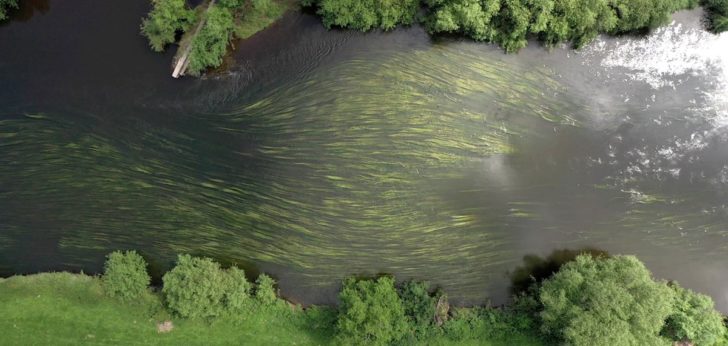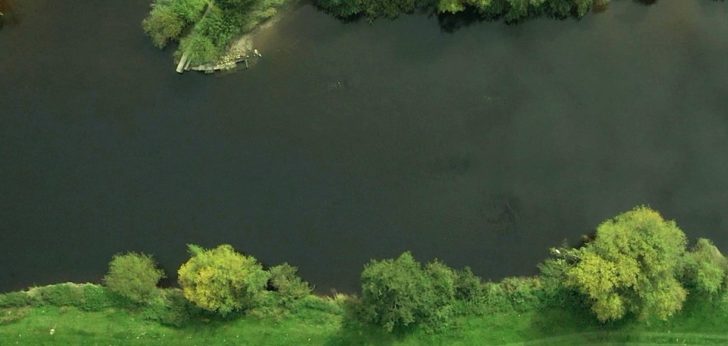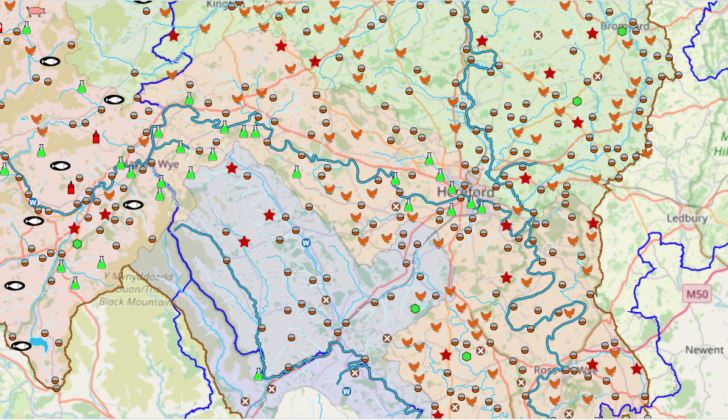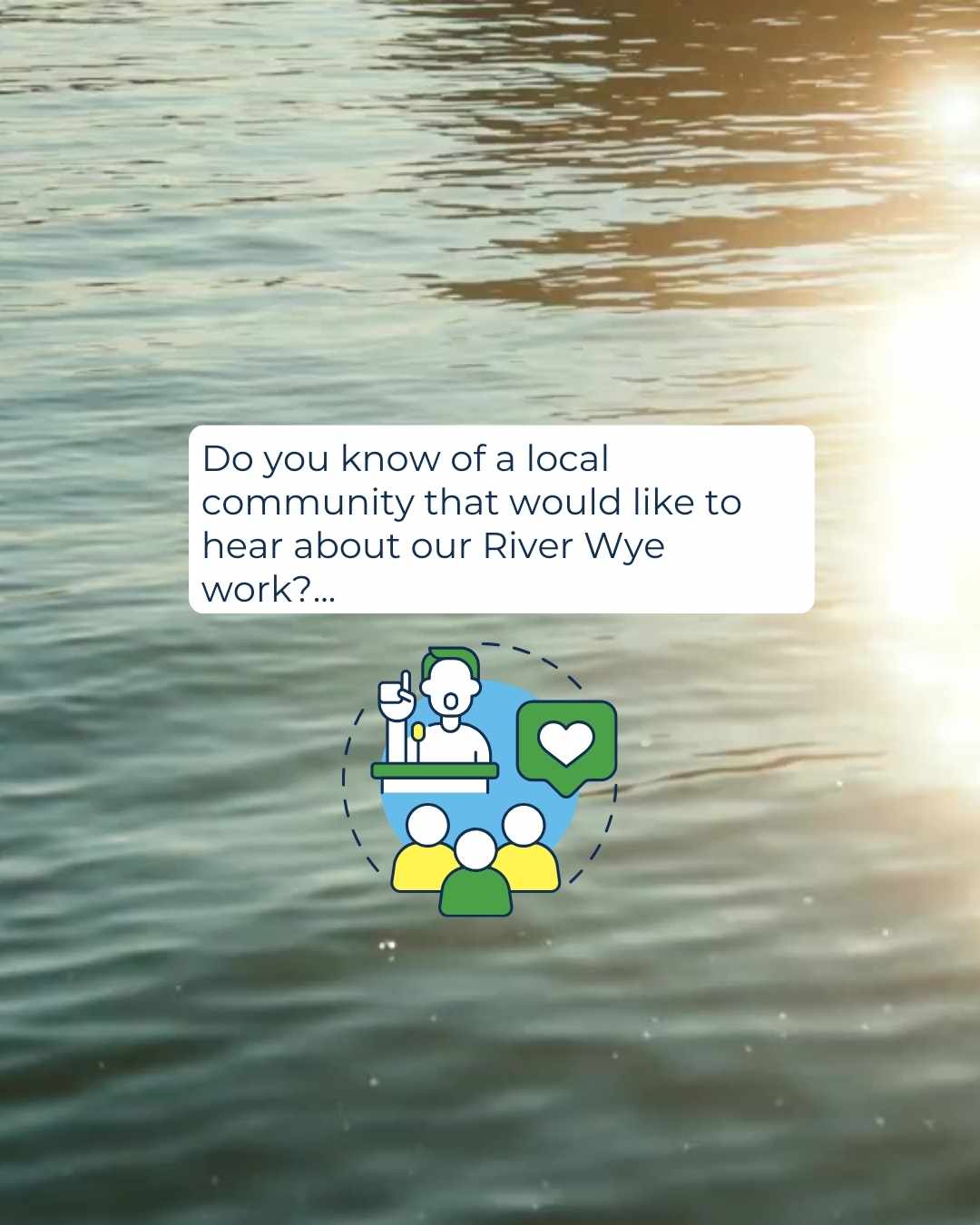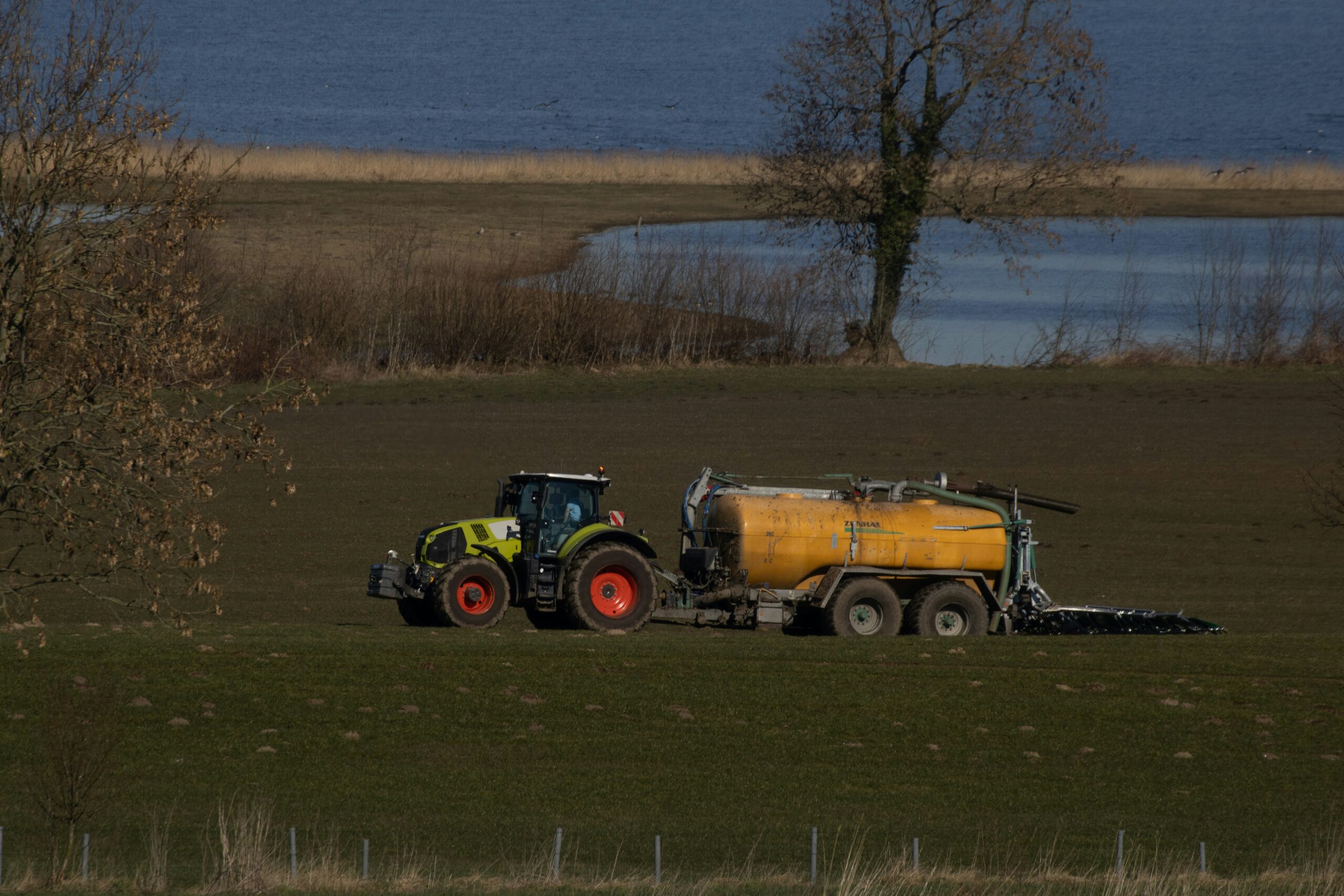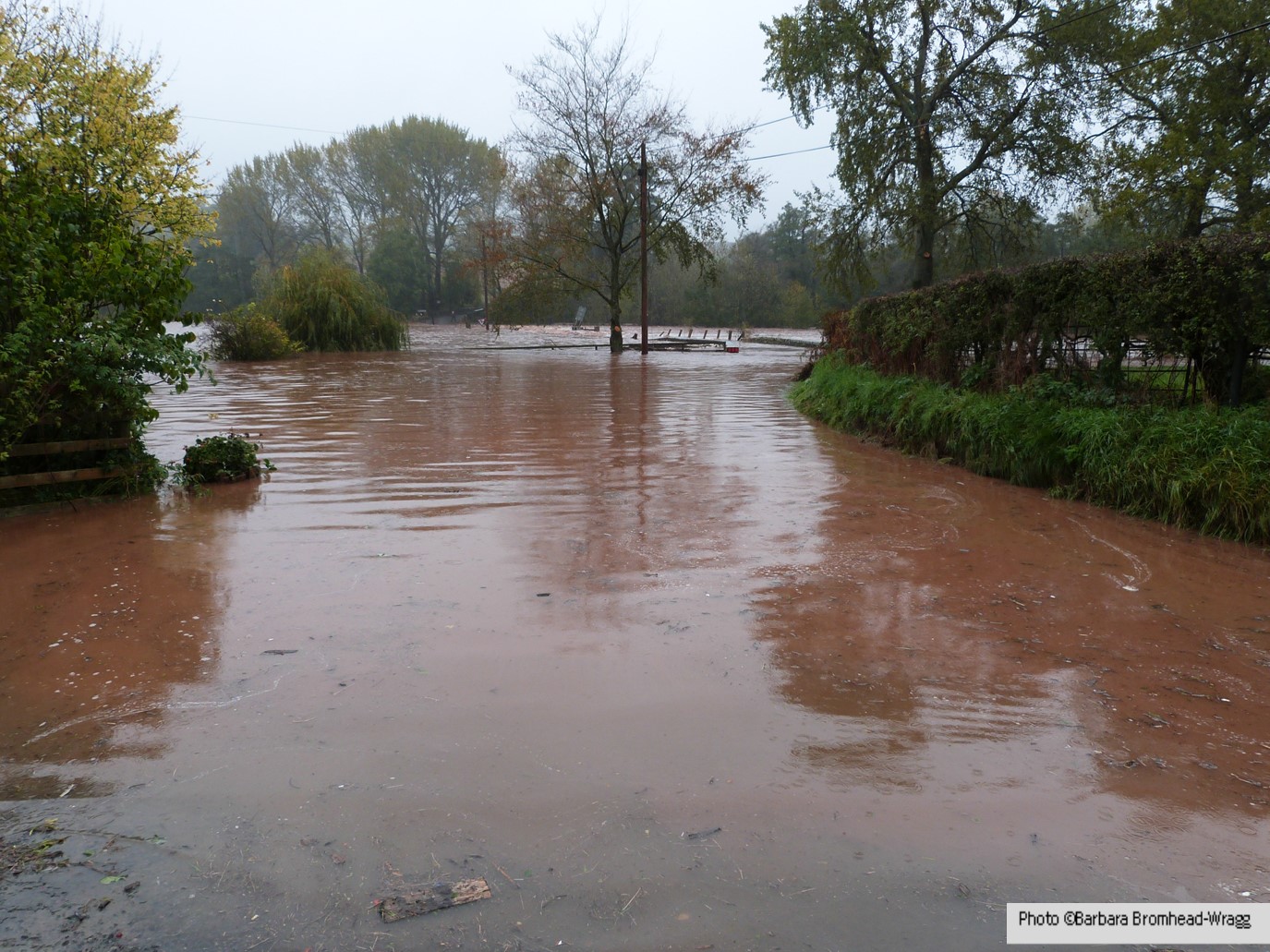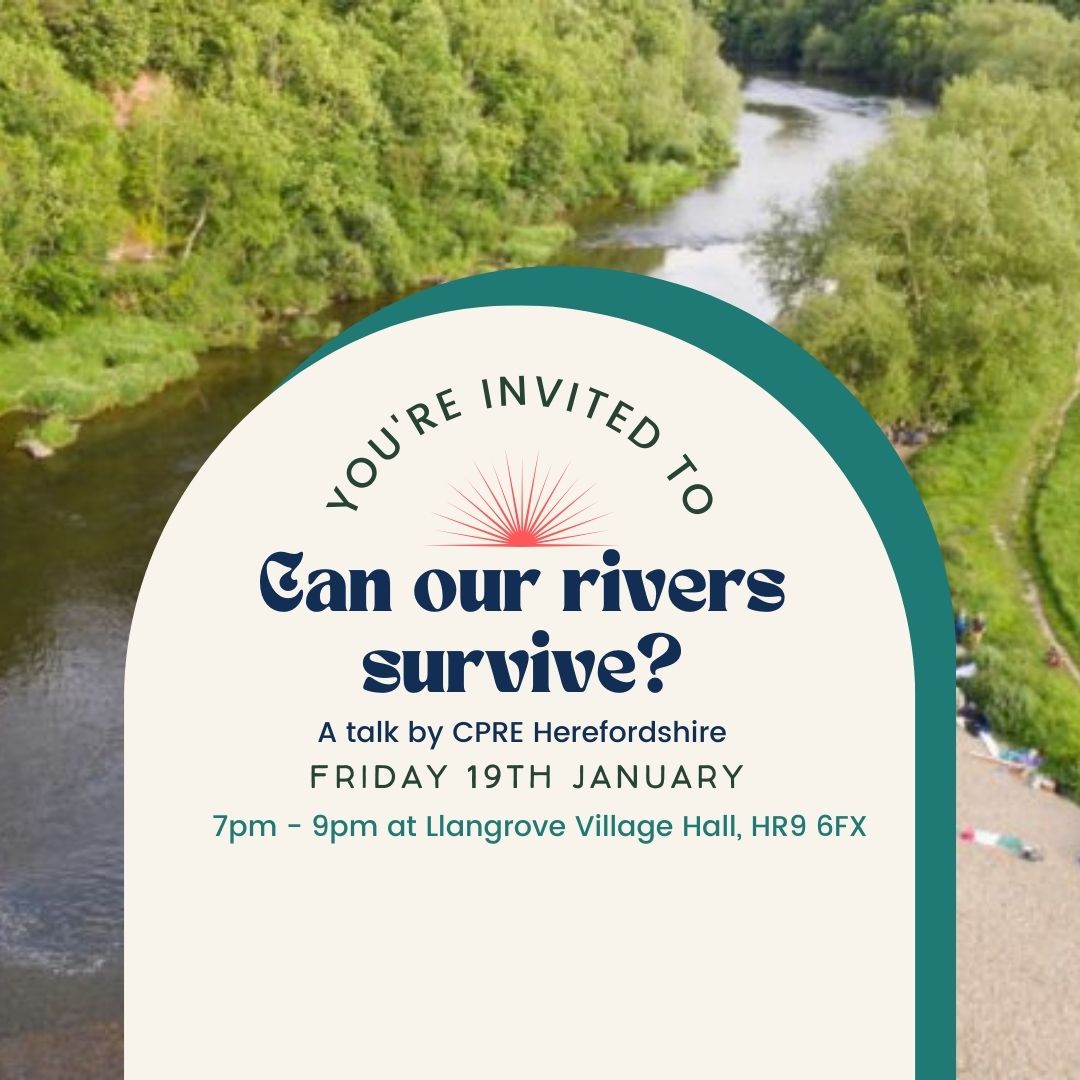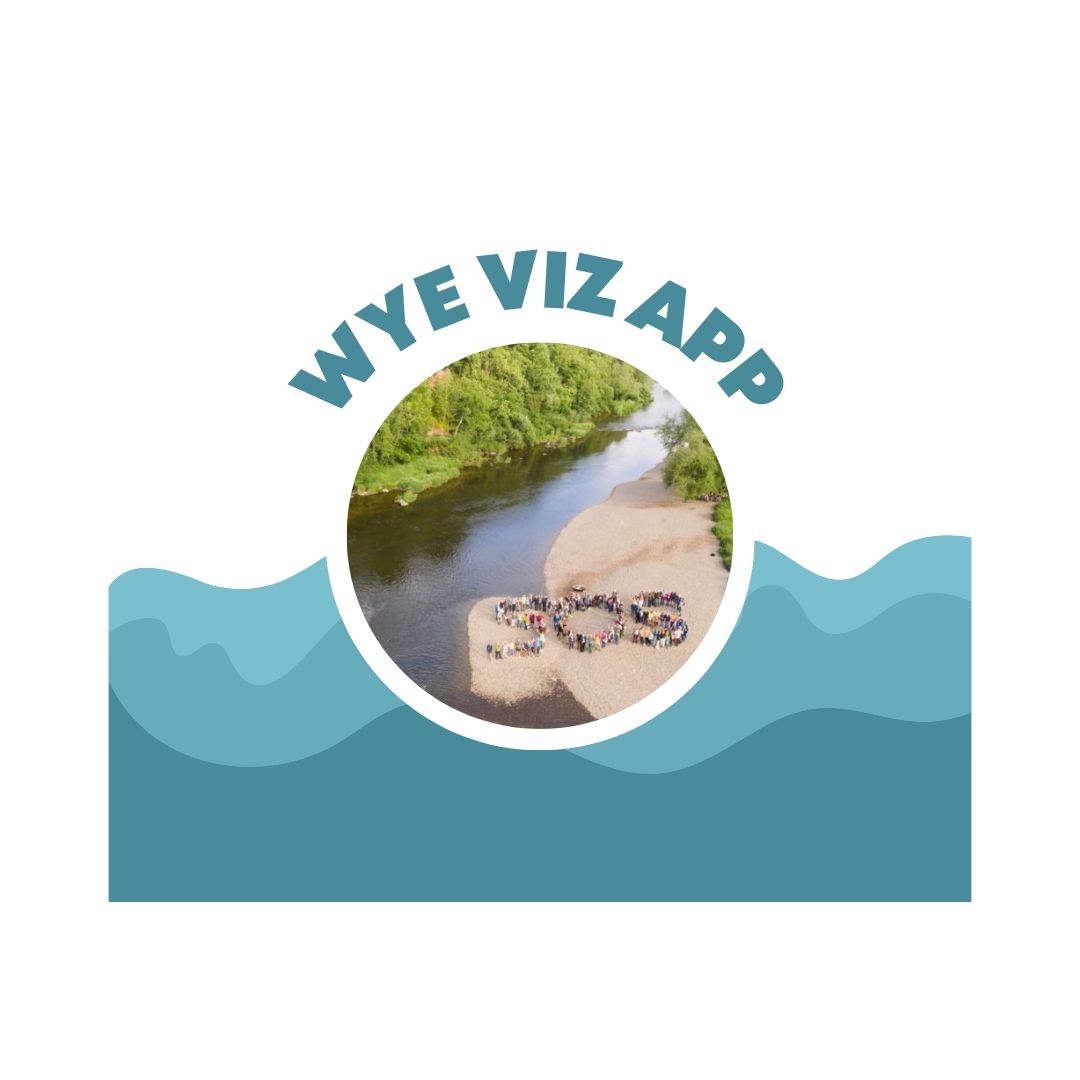The River Wye is in crisis
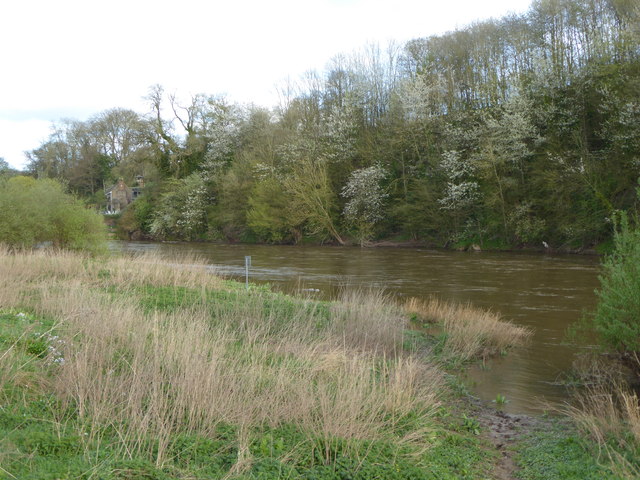
Pollution is harming the River Wye. We must act.
What’s wrong
The River Wye has a tranquil beauty but what’s not obvious to a casual observer is the disappearance of Ranunculus aquatilis, the beautiful Water Crowfoot which is so symbolic of our great river and a keystone species. We cannot see the lack of fish which have died from pollution nor reduced numbers of cygnets that rely on the Water Crowfoot as a food source.
What has been all too visible over the years is the green algal bloom that at times has covered our river, cutting out sunlight which in turn suppresses plant and fish stocks. This bloom eventually sinks and covers gravel riverbeds with slime, decimating fish breeding grounds. Very low waters as during the July 2022 heatwave make the problem worse.
For the past two years communities all along the river, including ourselves, have been raising the alarm and calling for agencies to take immediate remedial action. The local and national media are now paying more attention. And although last summer’s live documentary “Rivercide” covered many rivers in England, it was mostly filmed on the banks of the Wye.
Our lovely River Wye had the dubious honour of many special mentions in the detailed and hard-hitting Environmental Audit Committee report Water quality in rivers published Jan 2022.
Shortly after this, Herefordshire council wrote to the then Environment Minister Rebecca Pow calling for her to put a Water Protection Zone (WPZ) in place. Disappointingly, she failed to back the plan for a WPZ shortly before her resignation in early July
Pollution sources
Agricultural pollution
It is well known that the causes of pollution are complex. However, nitrate and phosphate pollution have sources that are well known. At the lowest end of the scale, science attributes two-thirds of this pollution (66% based on SAGIS modelling) to agriculture and it could now be much higher. This is mainly run-off from farmland with both water and soil erosion carrying chemical fertiliser and natural manure into water courses. Large tracts of land (no longer with the hedges and headlands that used to form Herefordshire’s orchards and pastures) are now arable and discharge excess rainwater and nutrients direct into the Wye catchment. Soil compaction, due to modern agricultural operations, also slows water absorption and accelerates run-off.
This is made worse by the boom in industrial-scale chicken sheds along the Wye in Powys and parts of Herefordshire. The manure from an estimated 20 million chickens is disposed of by spreading on agricultural land. Government agencies, councils, interested parties and lobby groups have talked about the problem for years without any decisive or legal action. Finally one of the industry giants, Avara Foods, admitted at a Nutrient Management Board meeting in October 21 that they’re part of the problem and have a responsibility to find solutions. (Times article 12th October). Let’s hope this leads to effective action.
In May 2022 the long awaited and much discussed RePhoKus report identified high levels of ‘legacy phosphate’ in Herefordshire soils. Each year 3,000 more tonnes of phosphate is spread on our fields than the crops and grasslands can take up. Then each time it rains the flows wash phosphate into our rivers. After many years of this, there is now enough phosphate already on the county’s fields to cover the next 5-8 years!
The Environment Agency (EA) and Natural England have in May 2022 revised their target phosphate levels downwards for both the Wye and the Lugg. These lower levels reflect near natural states for the rivers and the revisions show just how serious the situation is.
Sewage
The second source of pollution is our ageing sewage works which also discharge into the Wye catchment. However, the water industry has, and continues to invest, millions of pounds in water treatment. Praise should go to Herefordshire Council which, whilst not legally responsible and with no enforcement powers, did in 2020 allocate approximately £3m to clean up sewage discharge. Plans for additional wetland filtration are well underway and work on construction is imminent.
What are we doing?
We are now campaigning, stressing that those with the powers to act must be seen to act. When will the Environment Agency be let loose to use its teeth and prosecute polluters? They have the statutory powers but it is clear that their position of fine words and encouragement is not making the Rivers Wye and Lugg healthy.
And we’re excited to be working with other organisations including Cardiff University, the Environment Agency (EA) and the Wye & Usk Foundation in the Citizen Science project monitoring water quality throughout the Wye and Lugg catchment areas. Our data will help the Environment Agency to locate where pollution is coming from in order to tackle it at source. We’ve had a massive response, from over 400 volunteers for our Citizen Science project. The EA is working on making all our data open source for all to view.
To get an overview of the problem and view our sampling points, please see our interactive layered map which is a joint venture with our environmental partners. (There’s a lot of data so it may take a few moments to upload!).
We were delighted to be kicking off the month of ‘Wye July’ events with a Save the Lugg event in Leominster. And we’re most grateful to the current mayor Trish Marsh who has named us her Mayoral Charity this year.
We fully support the 7 actions proposed by RiverActionUK last year in their catchment-based approach to saving the Wye. In any other arena, such as the industrial world, swift action is evident so why have we been turning a blind eye to agriculture? Farming is essential to food production and many farmers have strong environmental credentials but it is also clear that some are not safeguarding our planet’s environmental future.
Our team of planning volunteers are busy (as always!) commenting on new applications of interest. For example, we sent in a comment on a recent application for 6 broiler units, housing nearly 2.5 million birds a year, in Lyonshall. We’re pleased that the application was turned down in March 2022.
What you can do
The evidence exists with river gravel beds covered in slime, algal bloom across great swathes of surface water and thousands of fish dying. Now is the time for all of us to act.
We need to be one voice and demand action not words. Some of the solutions in agriculture are also beneficial to achieving climate change goals so there is no conceivable reason to delay further. It is clear that there will be increased costs to some parts of our agricultural industry but what price do we put on a clean and thriving ecosystem called the River Wye?
Please write to your MP demanding action to save the River Wye and an increase in funding to the Environment Agency for better resources and enforcement.
Or you could write to Herefordshire Council and to the Environment Agency expressing your concerns, calling for action – and also showing your appreciation of the positive steps that are being taken.
A new focus is the supermarket giant Tesco – the biggest customer of Wye Valley egg producer Noble Foods and of chicken producer Avara Foods. Email or write to them at Freepost SCO2298
Dundee DD1 9NF and tell them you support RiverAction’s call for Tesco to demand higher environmental standards from their suppliers.
From time to time we’ll highlight various petitions urging the Welsh or British parliaments to take action. You’ll find these on our Facebook and Twitter feeds.
Join our Citizen Science project measuring pollution in rivers large and small throughout Herefordshire to help pinpoint where the pollution sources are. You don’t need any specific experience to join and be of real value and you’ll be able to choose how, where and when you support the project.
The River Wye is one of the great amenity rivers of England and brings tourism and significant financial gain to our county. We need your voice to be heard protecting our great river.
Links and contacts
Visit us on Facebook for more comments on this issue.
Useful contacts
- Jesse Norman MP Hereford & S. Herefordshire: jesse.norman.mp@parliament.uk
- Bill Wiggin MP N. Herefordshire: bill.wiggin.mp@parliament.uk
- Herefordshire Council – Councillor Ellie Chowns Cabinet Member for the Environment. (She is doing a great job; by lending her your voice she will be even more empowered to seek action): ellie.chowns@herefordshire.gov.uk
- The Environment Agency: enquiries@environment-agency.gov.uk



